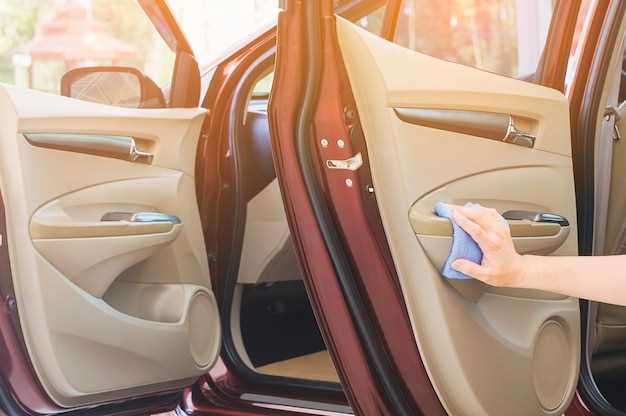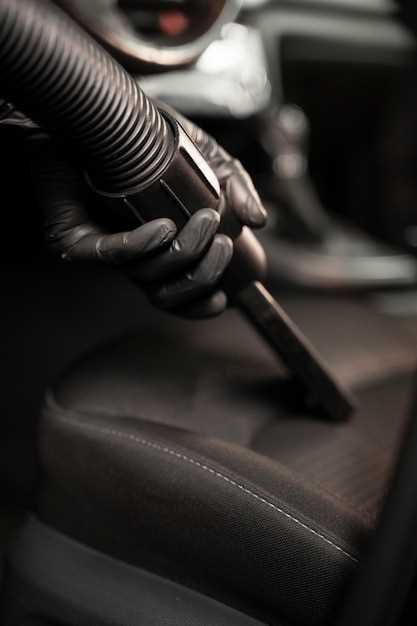
Maintaining the cleanliness of your car’s interior is essential for both aesthetics and hygiene. One of the most challenging aspects of car care is dealing with tough stains that can accumulate on upholstery over time. Whether it’s a spill from your morning coffee, muddy footprints, or other unexpected accidents, it is crucial to have an effective strategy to tackle these issues without damaging the fabric.
Using the right cleaner is key when addressing stubborn stains. Not all cleaning products are suitable for every type of upholstery, and choosing the wrong one can lead to discoloration or further damage. It’s important to identify the material of your car’s seats, as different fabrics require different cleaning methods. With the right knowledge and tools, you can restore your car’s interior to its original condition.
In this article, we will explore various techniques and products specifically designed to remove tough stains from car upholstery. From homemade solutions to commercial cleaners, you will find a range of options that can help you effectively combat common stains. By following our guidelines, you can ensure your vehicle remains a clean and comfortable space to enjoy.
Identify Different Types of Stains on Car Upholstery

Understanding the different types of stains on car upholstery is essential for effective cleaning. Each stain requires a specific approach and cleaner to ensure the fabric remains undamaged.
- Food and Beverage Stains
- Coffee and tea can leave dark marks on fabric.
- Spills from soda or juice may create sticky residues.
- Greasy foods can cause oily stains that attract dirt.
- Ink Stains
- Ink from pens or markers can create permanent marks if not treated promptly.
- Use specific ink removers to avoid spreading the stain.
- Oil-Based Stains
- Oil from skin or machinery may lead to discoloration.
- Special fabric cleaners designed for oil stains work best.
- Pet Stains
- Urine, feces, and vomit can cause both stains and odors.
- Enzymatic cleaners are effective for breaking down organic matter.
- Paint Stains
- Accidental spills from paint cans can be difficult to remove.
- Specialized paint removers should be used cautiously to prevent fabric damage.
Recognizing the type of stain allows for the selection of the appropriate cleaner, ensuring effective treatment while preserving the integrity of the upholstery fabric.
Select the Right Fabric Cleaner for Your Car’s Upholstery
Choosing the appropriate fabric cleaner for your car’s upholstery is essential for effectively removing tough stains without causing damage. Start by identifying the type of fabric used in your vehicle, as different materials require specific cleaning solutions. For example, synthetic fabrics like polyester and nylon are typically more durable and resistant to stains than natural fabrics like cotton or wool.
Once you know the fabric type, look for cleaners specifically formulated for automotive use. These cleaners often contain enzymes or surfactants designed to penetrate and break down stubborn stains, such as food, grease, or drink spills. Always check the label for compatibility with your fabric type, and ensure it is safe for use on upholstery.
It’s wise to consider pH-balanced options, as these are less likely to harm the fabric or discolor it over time. Test a small hidden area before applying the cleaner to the entire stain to ensure there’s no adverse reaction. Additionally, some cleaners come in spray bottles for easy application, while others may be concentrated and require dilution.
Remember to also look for features like biodegradable ingredients and low VOC (volatile organic compounds) emissions. These features not only contribute to a healthier environment but also ensure the safety of the interior space within your vehicle.
Step-by-Step Guide to Applying Cleaner and Removing Stains

To effectively remove tough stains from car upholstery, start by selecting an appropriate cleaner designed for fabric. Ensure it is safe for the specific material of your upholstery to prevent damage.
Begin by testing the cleaner on a hidden area of the fabric. Apply a small amount and wait a few minutes to observe any adverse reactions. If the fabric remains unaffected, proceed with the cleaning process.
Next, gather your supplies: a spray bottle for the cleaner, a soft-bristle brush, a clean microfiber cloth, and water. This will help you effectively apply the cleaner and remove the stains without harming the fabric.
Spray the cleaner directly onto the stained area, ensuring it saturates the fabric but does not soak through. Allow the cleaner to sit for 5 to 10 minutes to penetrate the stain, breaking it down for easier removal.
Using the soft-bristle brush, gently agitate the stained area in a circular motion. This helps the cleaner work deeper into the fibers of the fabric, lifting the stain away. Be careful not to scrub too hard to avoid damaging the upholstery.
After brushing, take a clean microfiber cloth and dab the area to absorb the loosened stain and cleaner. Avoid rubbing, as this might spread the stain further. Keep dabbing until no more residue transfers to the cloth.
For stubborn stains, repeat the spraying and brushing process as necessary. Persistence is key, but always allow the cleaner ample time to break down the stains.
Once the stain appears to be removed, wipe the area with a damp cloth to remove any remaining cleaner. Then, allow the upholstery to air dry completely. If possible, open the car doors or windows to facilitate the drying process.
After drying, inspect the area to ensure the stain is gone. If any remnants remain, repeat the cleaning method until achieving the desired results. Regular maintenance and quick action on new stains will help keep your car upholstery looking its best.





